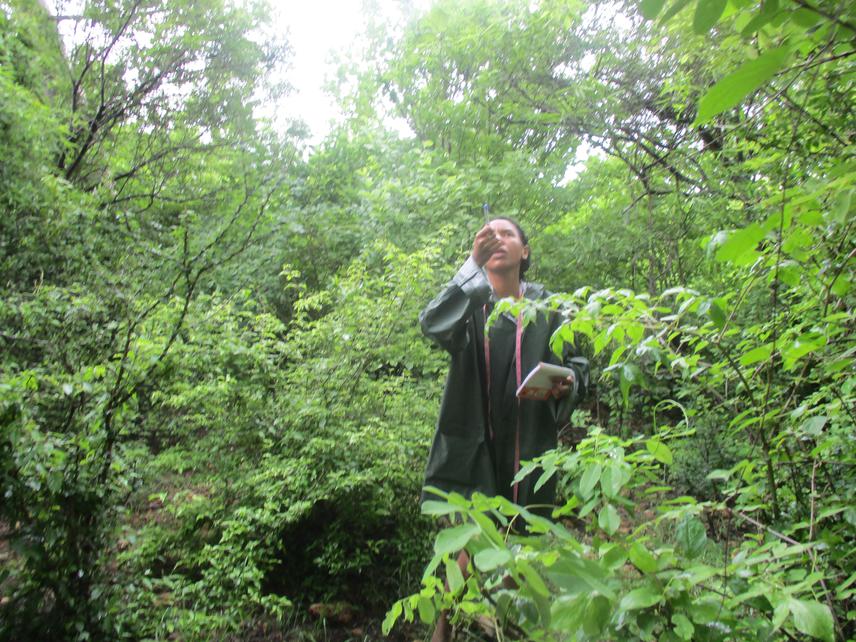Elysée Rasoamanana
Baobabs (Adansonia, Malvaceae), iconic tree of Madagascar, Africa and Australia are known to live for thousands years. Madagascar is home to seven species, of which six are endemic to, of the nine present worldwide. Unfortunately, according to UICN (2018), three of the Malagasy baobab species (A. grandidieri, A. perrieri and A. suarezensis) are “endangered”. Moreover, some species suffer from population decline and all species present low seedling survival, with mortality rates up to 75%. In this project, I plan to perform a population viability analysis of A. perrieri and A. suarezensis to estimate population sustainability and to understand their conservation needs. I will develop a matrix population models that can predict the stability of the population and the probability of their risk of extinction. The results of this research will be used to set up an adequate conservation system for baobab species.

Data collection.
Baobabs (Adansonia, Malvaceae) comprises nine species distributed worldwide of which seven are present in Madagascar, six are endemics to Grande Ile. In addition to being a taxon representing a high level of biodiversity, baobabs also have a significant economic and cultural value for Madagascar. However, according to UICN (2018), three of the Malagasy baobab species (A. grandidieri, A. perrieri and A. suarezensis) are “endangered” and the three others (A. madagascarensis, A. za and A. rubrostipa) are classified “lower risk/near threatened” based on species occupancy and distribution. More than 15000 adults trees of A. suarezensis and only 99 adult trees of A. perrieri was estimated by satellite image (Vieilledent et al. 2013). In addition, numerous authors reported low survival of seedling in all species of baobabs, with mortality rate up to 75%.
This project aims to evaluate the population viability analysis (PVA) of A. perrieri and A. suarezensis to better understand the species and identify these conservation needs. Specifically, our objectives are
(1) to assess the stability of the population dynamics in equilibrium;
(2) Identify if baobabs studied are at absolute risk of extinction in the future;
(3) Identify the consequences of low seedling recruitment on vital rate of baobab from sensitivity analysis;
(4) Identify if seedling herbivores have a significant effect on seedling recruitment and should be considered in the conservation measure;
(5) to propose conservation solutions.
Fieldwork for data collection will be divided in three parts: tree measurements, seed production and monitoring of seedling survivor and predation. For population viability analysis, stage based life-history of baobab will be constructed. Sensitivity analyses will be made to quantify the degree that changes in parameter values affect model outcomes and may identify the management strategies to be most effective for species recovery. Finally, the probability of future risk will be assessed.
The expected conservation output of this project is to propose and implement a conservation system suitable for each species.